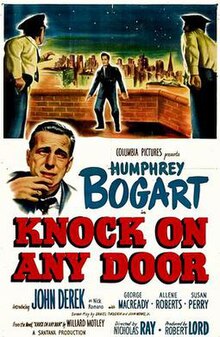
Humphrey DeForest Bogart, colloquially nicknamed Bogie, was an American actor. His performances in classic Hollywood cinema films made him an American cultural icon. In 1999, the American Film Institute selected Bogart as the greatest male star of classic American cinema.

High Sierra is a 1941 American film noir directed by Raoul Walsh, written by William R. Burnett and John Huston from the novel by Burnett, and starring Ida Lupino and Humphrey Bogart. Its plot follows a career criminal who becomes involved in a jewel heist in a resort town in California's Sierra Nevada, along with a young former taxi dancer (Lupino).

In a Lonely Place is a 1950 American film noir directed by Nicholas Ray and starring Humphrey Bogart and Gloria Grahame, produced for Bogart's Santana Productions. The script was written by Andrew P. Solt from Edmund H. North's adaptation of Dorothy B. Hughes' 1947 novel of the same name.

John Derek was an American actor, filmmaker and photographer. He appeared in such films as Knock on Any Door, All the King's Men, Rogues of Sherwood Forest (1950), and The Ten Commandments (1956). He discovered actress Bo Derek and she became his fourth wife.
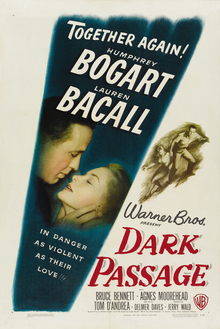
Dark Passage is a 1947 American mystery thriller film directed by Delmer Daves and starring Humphrey Bogart and Lauren Bacall. The film is based on the 1946 novel of the same title by David Goodis. It was the third of four films real-life couple Bacall and Bogart made together.

The Harder They Fall is a 1956 American boxing film noir directed by Mark Robson, produced and written by Philip Yordan, based on Budd Schulberg's 1947 novel. It was Humphrey Bogart's final film role. It received an Oscar nomination for Best Cinematography, Black and White, for Burnett Guffey at the 29th Academy Awards.

Emma Allene Roberts was an American actress.

Mark John Hellinger was an American journalist, theatre columnist and film producer.

Nobody Lives Forever is a 1946 American crime film noir directed by Jean Negulesco and based on the novel I Wasn't Born Yesterday by W. R. Burnett. It stars John Garfield and Geraldine Fitzgerald and features Walter Brennan, Faye Emerson, George Coulouris and George Tobias.

They Drive by Night is a 1940 American film noir directed by Raoul Walsh and starring George Raft, Ann Sheridan, Ida Lupino, and Humphrey Bogart, and featuring Gale Page, Alan Hale, Roscoe Karns, John Litel and George Tobias. The picture involves a pair of embattled truck drivers and was released in the UK under the title The Road to Frisco. The film was based on A. I. Bezzerides' 1938 novel Long Haul, which was later reprinted under the title They Drive by Night to capitalize on the success of the film.
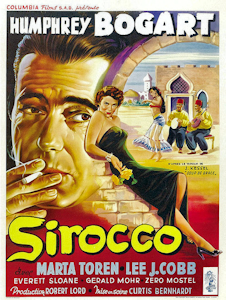
Sirocco is a 1951 American film noir directed by Curtis Bernhardt and starring Humphrey Bogart.
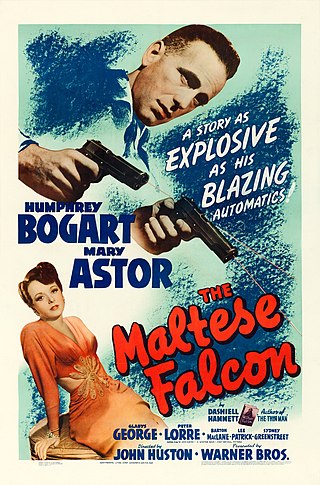
The Maltese Falcon is a 1941 American film noir in which a San Francisco private detective deals with three unscrupulous adventurers, all seeking a jewel-encrusted falcon statuette. Written and directed by John Huston in his directorial debut, the film was based on the 1930 novel The Maltese Falcon by Dashiell Hammett and is a remake of the 1931 film of the same name. It stars Humphrey Bogart as private investigator Sam Spade, Mary Astor as his femme fatale client, and as villains Peter Lorre and Sydney Greenstreet.

The Man I Love is a 1947 American film noir melodrama starring Ida Lupino, Robert Alda, Andrea King, and Bruce Bennett. Directed by Raoul Walsh, the film is based on the novel Night Shift by Maritta M. Wolff. The title is taken from the George and Ira Gershwin song "The Man I Love", which is prominently featured.
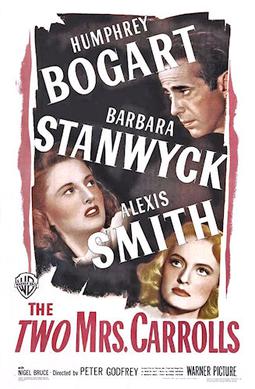
The Two Mrs. Carrolls is a 1947 American mystery film noir directed by Peter Godfrey and starring Humphrey Bogart, Barbara Stanwyck, and Alexis Smith. It was produced by Mark Hellinger from a screenplay by Thomas Job, based on the 1935 play by Martin Vale.
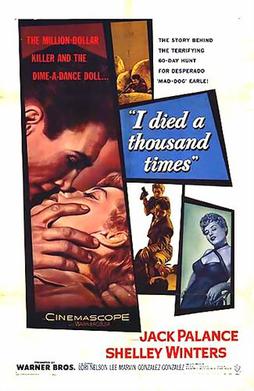
I Died a Thousand Times is a 1955 American CinemaScope Warnercolor film noir directed by Stuart Heisler. The drama features Jack Palance as paroled bank robber Roy Earle, with Shelley Winters, Lee Marvin, Earl Holliman, Perry Lopez, Pedro Gonzalez Gonzalez, and Lon Chaney Jr.
Manpower is a 1941 American crime melodrama directed by Raoul Walsh and starring Edward G. Robinson, Marlene Dietrich, and George Raft. The picture was written by Richard Macaulay and Jerry Wald, and the supporting cast features Alan Hale, Frank McHugh, Eve Arden, Barton MacLane, Ward Bond and Walter Catlett.
Daniel Taradash was an American screenwriter.

The Wagons Roll at Night is a 1941 circus film directed by Ray Enright and starring Humphrey Bogart as traveling carnival owner Nick Coster, Sylvia Sidney as his girlfriend, and Eddie Albert as a newcomer who falls in love with Nick's sister, played by Joan Leslie. The screenplay is by Fred Niblo Jr. and Barry Trivers, and the film is based on a 1936 novel by Francis Wallace, first published as a serial in The Saturday Evening Post.
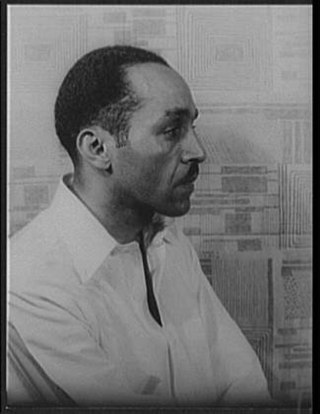
Willard Francis Motley was an American author. Beginning as a teenager, Motley published a column in the African-American oriented Chicago Defender newspaper under the pen-name Bud Billiken. He worked as a freelance writer, and later founded and published the Hull House Magazine and worked in the Federal Writers Project. Motley's first and best known novel was Knock on Any Door (1947), which was made into a movie of the same name (1949).

Let No Man Write My Epitaph is a 1960 American neo noir crime film about the son of an executed criminal who aspires to escape his impoverished, crime-ridden neighborhood with the help of his mother and a group of concerned neighbors. The film was directed by Philip Leacock, and stars Burl Ives, Shelley Winters, James Darren, Jean Seberg, Ricardo Montalbán and Ella Fitzgerald.
